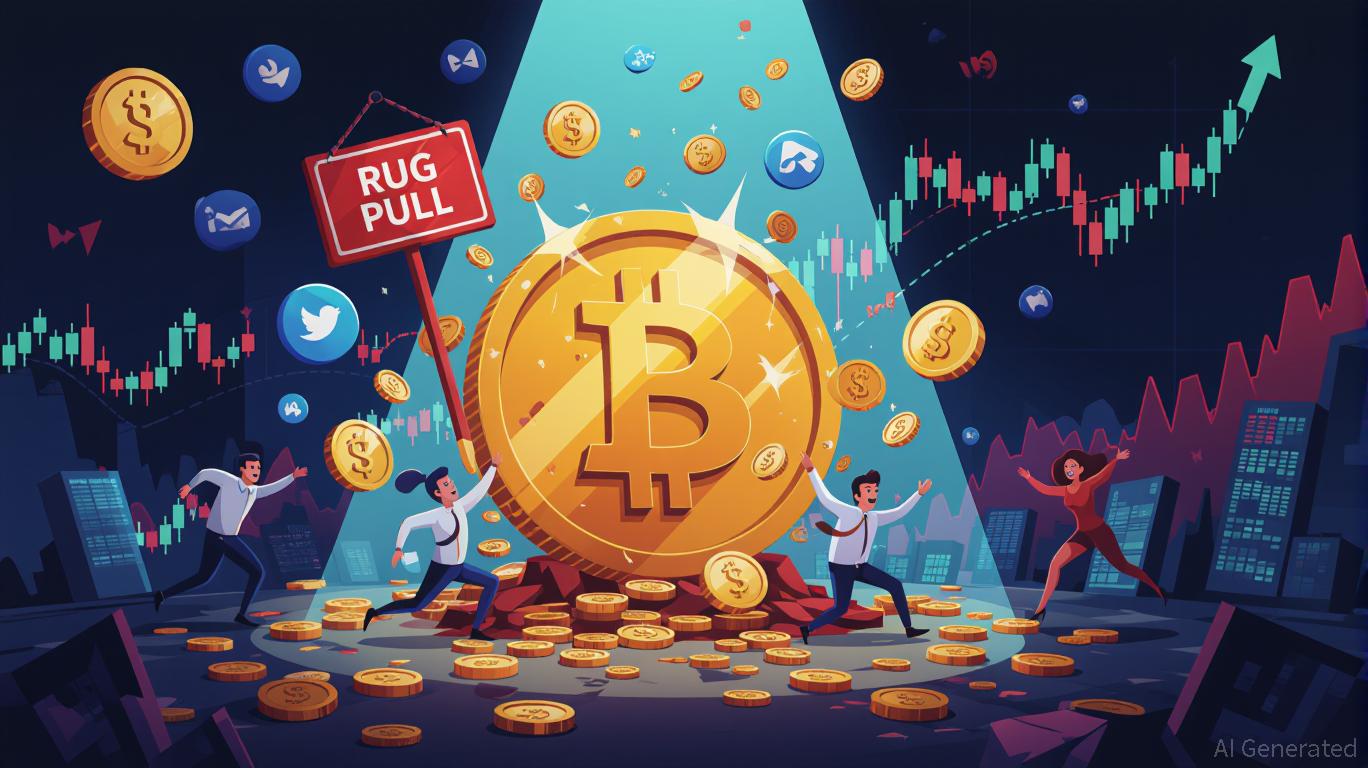
The Solana blockchain has become a lightning rod for both innovation and chaos in the cryptocurrency space. In 2025, the ecosystem’s meme coin market has evolved into a high-stakes arena where speculative fervor, celebrity endorsements, and technical vulnerabilities collide. While the frequency of rug pulls has declined by 66% year-on-year, the financial impact of these incidents has skyrocketed, with nearly $6 billion lost in Q2 2025 alone. This shift—from frequent small-scale scams to fewer but catastrophic collapses—reflects a broader transformation in how fraudsters and investors interact in the decentralized finance (DeFi) landscape.
The Rug Pull Paradox: Less Frequent, More Devastating
Rug pulls, once a common but relatively minor threat in DeFi, have become surgical in their execution. The collapse of Mantra’s OM token in April 2025, which erased $5.6 billion in value within hours, exemplifies this trend. Unlike the smaller, amateurish scams of 2024, modern rug pulls are often orchestrated by teams with polished branding, strategic social media campaigns, and technical sophistication. Platforms like Pump.fun and Raydium, which facilitate token creation on Solana, have become hotbeds for these schemes. On Pump.fun, 98.6% of tokens launched in 2025 have collapsed into worthless pump-and-dump schemes, while Raydium’s liquidity pools show similar risks.
The mechanics of these scams are increasingly insidious. Fraudsters exploit Solana’s low transaction fees and fast processing times to deploy tokens with unaudited smart contracts, often pre-allocating large portions of the supply to insiders. When hype builds—driven by viral social media posts or celebrity endorsements—early buyers dump their tokens, draining liquidity pools and leaving retail investors with worthless assets. The recent case of Libertad’s LIBRA token, which surged to a $4.56 billion market cap after a tweet from Argentina’s president Javier Milei before collapsing by 94%, underscores how easily sentiment can be weaponized.
Celebrity Endorsements: Hype as a Double-Edged Sword
Celebrities and influencers have become central to the Solana meme coin ecosystem, acting as both catalysts and cautionary tales. Kanye West’s YZY token, launched in August 2025, surged to a $3 billion market cap within 40 minutes of its debut, only to crash by 66.82% days later. The token’s success hinged on West’s cultural clout, which investors projected onto the project despite its lack of utility or transparency. Similarly, Donald Trump’s $TRUMP token and Kim Kardashian’s EMAX have followed similar trajectories, leveraging political and social media influence to drive short-term speculation.
The role of social media platforms like X (Twitter), Reddit, and Telegram cannot be overstated. These platforms amplify narratives, creating echo chambers where hype becomes self-fulfilling. For instance, YZY’s 24-hour trading volume on Meteora reached $277 million, driven by a 469.50% spike in volume—a classic sign of a crowded exit. Behavioral finance models suggest that such surges often precede market corrections, as investors chase FOMO (fear of missing out) without regard for fundamentals.
Investor Behavior: Degens, Meme-Maxis, and the New Retail Landscape
The Solana meme coin market has given rise to distinct investor personas. “Degen” investors, active on Telegram and other real-time trading platforms, seek 10x returns in under 48 hours, often using leverage and burner wallets. “Meme-maxis,” loyal to tokens like DOGE or SHIB, invest based on cultural or ideological alignment rather than financial logic. Trend chasers, meanwhile, monitor social sentiment and trade based on viral tweets or celebrity mentions. These groups contribute to the ecosystem’s liquidity but also exacerbate its volatility.
Liquidity dynamics are further complicated by Solana’s infrastructure. The blockchain’s speed and low fees enable rapid token creation and trading, but they also allow fraudsters to execute rug pulls before investors can react. For example, the YZY token’s smart contract was rated “dangerous” due to vulnerabilities like reentrancy attacks, yet its launch proceeded with minimal scrutiny. This highlights a critical gap in the ecosystem: while technical tools like Token Sniffer can detect red flags, many investors ignore them in favor of speculative bets.
Regulatory Scrutiny and the Path Forward
Regulators are beginning to take notice. The U.S. SEC’s Cyber and Emerging Technologies Unit and the DOJ’s focus on investor harm signal a shift toward enforcement. The SEC’s ongoing review of the Grayscale Solana Trust’s proposed ETP listing—amended three times as of August 2025—reflects broader uncertainty about whether Solana and its tokens qualify as securities. While the SEC has not yet classified SOL as a security, its actions against platforms like EMAX and $TRUMP suggest a growing appetite for oversight.
For investors, the key takeaway is clear: Solana-based meme coins are speculative assets, not investment vehicles. Strategies such as diversification, portfolio allocation limits, and the use of stop-loss orders are essential. Tools like Token Sniffer and on-chain analytics can help identify red flags, but they require discipline to use effectively. Additionally, investors should benchmark meme coins against established assets like Bitcoin and Ethereum, which have demonstrated long-term resilience.
Conclusion: Chaos or Innovation?
The Solana meme coin ecosystem is a paradox. It represents both the democratization of finance and the dangers of unregulated speculation. While celebrity-driven hype and social media influence create opportunities for rapid gains, they also expose investors to systemic risks. For the ecosystem to mature, platforms must prioritize transparency, and investors must adopt a more cautious approach.
In the end, Solana-based meme coins are best viewed as high-risk, high-reward bets. They offer a glimpse into the future of decentralized finance but require a mindset that balances innovation with prudence. As the SEC and DOJ continue to refine their regulatory frameworks, the line between speculative chaos and a new frontier of finance will become clearer. For now, investors must navigate this volatile landscape with both curiosity and caution.